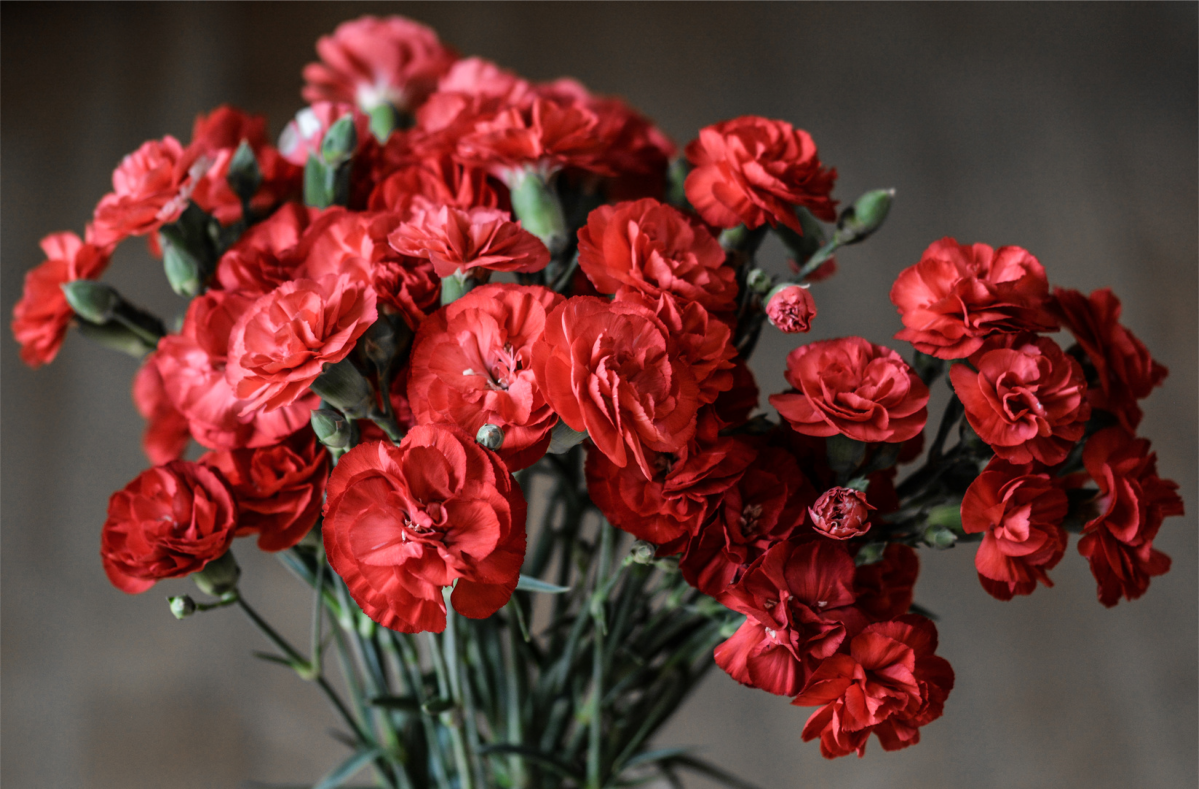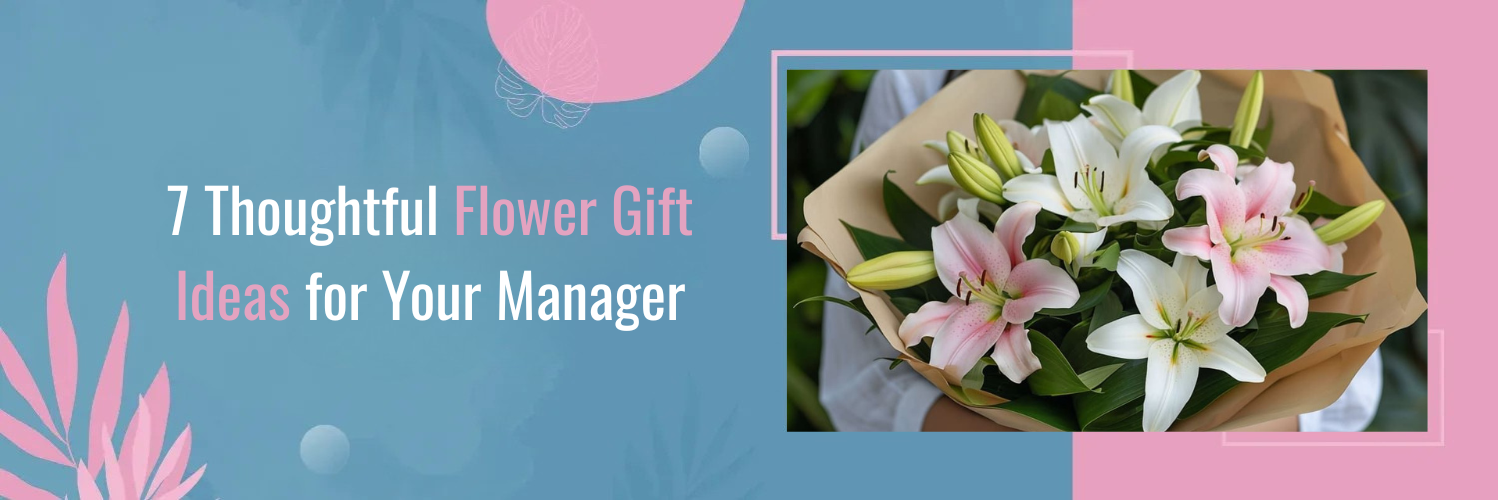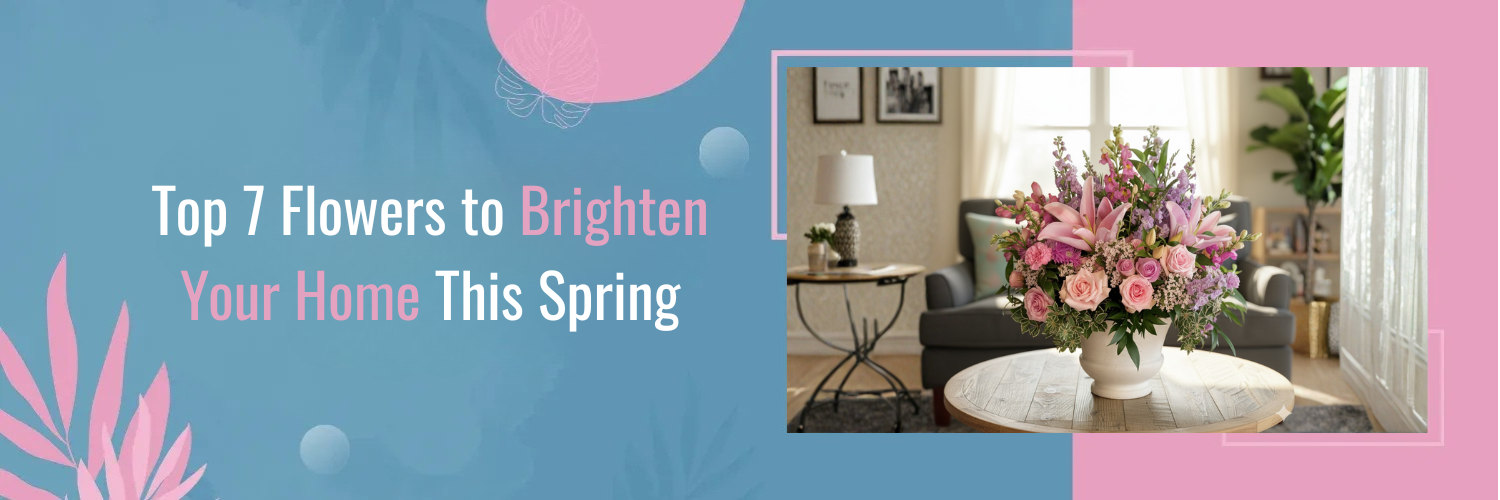What is Color Psychology?
Color psychology, the study of how colors influence human behavior and emotions, has found its way into the world of floristry. By understanding the emotional impact of different flower colors, you can choose blooms that perfectly match the mood or message you want to convey. In this blog, we will explore the basics of color psychology, delve into the emotional impact of specific flower colors, and provide practical insights into when and how to use them.
Color Psychology in Flowers
Flowers have held a special place in human culture throughout history. They’re more than just decorative plants; they’re symbols of love, celebration, and remembrance. The act of giving or receiving flowers is a universal gesture of goodwill and emotion, transcending language barriers. Beyond their aesthetic appeal, flowers have a unique ability to convey a spectrum of emotions. This blog will delve into the fascinating world of color psychology in flowers, exploring how different flower colors can evoke a wide range of moods and feelings.
Understanding Color Psychology and Its Impact on Human Emotions
Color psychology is the study of how different colors can influence our emotions, perceptions, and behaviors. Colors have the power to evoke specific feelings and reactions within us, often on a subconscious level. For example, warm colors like red and yellow tend to stimulate feelings of energy, warmth, and happiness, while cool colors like blue and green can induce a sense of calm, tranquility, and relaxation.
The emotional impact of colors is deeply rooted in our evolutionary history and cultural experiences. Red, for instance, may trigger a heightened sense of alertness due to its association with danger in nature, while blue may evoke feelings of safety and trust.
Red Flowers: Passion and Love
Red flowers hold a unique and passionate allure, making them some of the most emotionally charged blooms in the floral world. The vibrant hue of red is universally recognized as a symbol of love, desire, and intense emotion.
The color red has an innate ability to stir deep emotions within us. It is often associated with intense feelings of passion, desire, and love. When you gift someone red flowers, you are not merely offering a bouquet; you are expressing the depth of your affection and longing. The sight of red blooms can quicken the heartbeat and ignite the flame of romance.
Red flowers can be a powerful way to convey your love and desire to a partner. Whether it’s a bouquet of red roses for a romantic evening or a single red tulip to express your admiration, the emotional impact of red blooms is undeniable.
Within the realm of red flowers, there is a rich diversity of species, each with its own unique symbolism. For instance, red roses are renowned as the ultimate symbol of romantic love. They speak of devotion and the deep affection you hold for someone. Red tulips, on the other hand, represent perfect love and passion.
Occasions and Moods Suited for Gifting Red Blooms
Red flowers are versatile and can be used for a variety of occasions beyond traditional romance. They have the power to add warmth and intensity to any setting or situation. Here are some occasions and moods where gifting red blooms is especially meaningful:
- Romantic Gestures: Red roses are a classic choice for anniversaries, Valentine’s Day, and marriage proposals. They symbolize enduring love and passion.
- Celebrations: Red flowers can be used to celebrate achievements and milestones, such as graduations and promotions. They convey a sense of pride and excitement.
- Sympathy and Support: Red flowers can also express empathy and support during difficult times. A bouquet of red blooms can offer comfort and solace.
- Festive Occasions: During festive seasons, red flowers can be used to decorate homes and venues, creating an atmosphere of joy and festivity.
Blue Flowers: Serenity and Tranquility
Blue flowers are a testament to the calming and serene qualities that colors can bring into our lives. The cool and tranquil nature of blue makes it a popular choice for creating peaceful atmospheres and conveying a sense of serenity.
Blue is often associated with the vastness of the sky and the soothing qualities of water. As a result, blue flowers, such as hydrangeas, delphiniums, and forget-me-nots, have a unique ability to induce a sense of calm, tranquility, and relaxation. The sight of blue blooms can have a soothing effect on our minds, making them an ideal choice for creating peaceful and stress-free environments.
The calming effect of blue flowers extends beyond aesthetics; it can have a tangible impact on our emotions and well-being. Whether used in floral arrangements, garden landscapes, or interior decor, blue flowers have the power to promote relaxation and serenity.
Varieties of Blue Flowers and Their Associations
The world of blue flowers offers a diverse array of shades and species, each with its own unique emotional associations. Lighter shades of blue, such as baby blue or sky blue, are often linked to feelings of serenity, open communication, and a sense of expansiveness. These hues evoke the tranquility of a clear summer sky.
On the other hand, deeper shades of blue, such as navy or indigo, may evoke a sense of mystery, depth, and introspection. These darker blues can create a contemplative atmosphere, encouraging introspection and calm.
When and Where to Use Blue Blooms for Maximum Impact
Blue flowers can be used strategically to influence the mood of a space or occasion. Here are some scenarios where blue blooms can have a maximum impact:
- Relaxation Spaces: Blue flowers are perfect for decorating relaxation spaces, such as bedrooms, meditation areas, or spa environments. Their calming presence can enhance the sense of tranquility.
- Weddings: Incorporating blue flowers into wedding decor can create an ambiance of serenity and harmony. Blue bouquets and centerpieces add an elegant touch to the celebration.
- Sympathy Arrangements: Blue flowers can be used in sympathy arrangements to provide comfort and solace during difficult times. They convey a sense of peace and support.
- Corporate Settings: Blue flowers can be used in office spaces to promote a calm and focused work environment. They help reduce stress and increase productivity.
Yellow Flowers: Happiness and Joy
Yellow flowers , like rays of sunshine, radiate happiness and joy. Their bright and cheerful hues instantly lift spirits and bring warmth to any setting. In this section, we’ll explore the inherently joyful nature of yellow flowers, delve into the various species of yellow blooms and their emotional connotations, and discover how to effectively use these vibrant blossoms to brighten up a wide range of situations.
Yellow is the color of optimism, happiness, and positivity. When you encounter yellow flowers, such as sunflowers, daffodils, or marigolds, you can’t help but feel a sense of joy and cheerfulness wash over you. It’s as if nature itself is smiling through these vibrant blossoms.
Yellow flowers have an innate ability to evoke feelings of happiness and positivity. Their sunny disposition can chase away the blues and bring a sense of hope and brightness to both indoor and outdoor spaces. Whether used in floral arrangements, garden landscapes, or as decorative accents, yellow flowers have a way of spreading happiness wherever they bloom.
Yellow Flower Species and Their Emotional Connotations
The world of yellow flowers is diverse, offering a wide array of species, each with its own unique emotional connotations. Here are some examples:
- Sunflowers: Sunflowers are iconic symbols of happiness and optimism. Their large, golden petals mimic the sun’s radiant glow and bring a sense of warmth to any occasion.
- Daffodils: Daffodils represent new beginnings and are often associated with the arrival of spring. They symbolize hope and renewal, making them perfect for celebrations and fresh starts.
- Marigolds: Marigolds are vibrant and resilient, symbolizing joy and endurance. They are often used in celebrations and festivals to add a burst of color and positivity.
- Yellow Roses: While red roses symbolize romantic love, yellow roses convey feelings of friendship, joy, and admiration. They are a wonderful choice for expressing appreciation and happiness.
Using Yellow Blooms to Brighten Up Various Situations
The cheerful nature of yellow flowers makes them ideal for brightening up a wide range of situations:
- Celebrations: Yellow flowers are perfect for celebrations, from birthdays to baby showers. They set a joyful and festive mood.
- Get Well Wishes: When someone is under the weather, a bouquet of yellow flowers can bring a smile to their face and lift their spirits.
- Home Decor: Yellow flowers can be used in home decor to add a pop of color and create a welcoming atmosphere. They infuse living spaces with energy and warmth.
- Weddings: Incorporating yellow flowers into wedding arrangements can symbolize happiness, positivity, and a bright future together.
- Outdoor Landscapes: In gardens and landscapes, yellow flowers can attract pollinators and create a vibrant and inviting environment.
Purple Flowers: Elegance and Royalty
Purple flowers , with their regal allure and elegant charm, hold a special place in the world of floristry. The color purple has long been associated with notions of royalty, sophistication, and grace. In this section, we’ll delve into the regal qualities of purple flowers, explore the different shades of purple and their symbolic significance, and discover how to incorporate these blooms into special occasions and settings.
Purple, often considered a color of mystery and enchantment, exudes an air of elegance and refinement. Purple flowers, such as lavender, orchids, and irises, capture this regal allure beautifully. Their deep, rich hues and intricate petal structures make them stand out in any floral arrangement, instantly adding a touch of sophistication.
Purple flowers evoke a sense of opulence and luxury, making them a popular choice for both formal and celebratory occasions. Whether used in bouquets, centerpieces, or decorative accents, purple blooms have the power to elevate the ambiance and create a sense of grandeur.
Different Shades of Purple and Their Symbolic Significance
The color purple encompasses a wide range of shades, each with its own symbolic significance:
- Deep Purple: Dark or deep purple flowers, such as dark irises or pansies, are often associated with royalty, power, and luxury. They symbolize nobility and sophistication.
- Lavender: Lavender, a lighter shade of purple, represents calmness, tranquility, and relaxation. It is often used in aromatherapy and relaxation practices.
- Mauve: Mauve or pale purple flowers symbolize romance and love. They can convey a sense of enchantment and adoration.
- Lilac: Lilac, a soft and delicate shade of purple, represents youthful innocence and first love. It is often associated with springtime and new beginnings.
- Violet: Violet is a versatile shade that combines the energy of red with the calmness of blue. It can symbolize creativity, inspiration, and spiritual growth.
Incorporating Purple Blooms into Special Occasions and Settings
Purple flowers add a touch of elegance and sophistication to a wide range of special occasions and settings:
- Weddings: Purple flowers are a popular choice for weddings, symbolizing grace, elegance, and eternal love. They can be used in bridal bouquets, centerpieces, and decor.
- Formal Events: Purple blooms are ideal for formal events, such as galas, banquets, and award ceremonies. They enhance the sense of prestige and luxury.
- Sympathy Arrangements: Deep purple or lavender flowers can be used in sympathy arrangements to convey respect and admiration for the departed. They offer solace and comfort to grieving individuals.
- Home Decor: Purple flowers can be used in home decor to create an atmosphere of sophistication and refinement. They add a sense of opulence to living spaces.
- Corporate Functions: Incorporating purple flowers into corporate events and meetings can create a professional and elegant ambiance. They convey a sense of authority and class.
White Flowers: Purity and Innocence
White flowers , with their pristine and delicate appearance, embody the qualities of purity and innocence. The color white has long been associated with notions of purity, simplicity, and new beginnings. In this section, we’ll discuss the symbolism of white flowers, explore the varieties of white blooms and their cultural interpretations, and learn how to use these blossoms to create a sense of serenity and simplicity.
White, the absence of color, represents purity, innocence, and a blank canvas. White flowers, such as lilies, roses, and daisies, capture this essence beautifully. They are often chosen for their clean and unblemished appearance, symbolizing a fresh start and a sense of purity.
White flowers convey a sense of simplicity and elegance. They are a classic choice for various occasions, from weddings and religious ceremonies to moments of reflection and remembrance. The purity associated with white blooms transcends cultural boundaries, making them a universal symbol of innocence and new beginnings.
Varieties of White Blooms and Their Cultural Interpretations
White flowers come in various varieties, and each holds its own cultural interpretations:
- White Lilies: White lilies, particularly the Madonna lily, symbolize purity and virtue. They are often associated with the Virgin Mary and are a common choice for religious ceremonies.
- White Roses: White roses represent purity, innocence, and new beginnings. They are often used in weddings to symbolize the purity of the union between two individuals.
- White Daisies: White daisies symbolize innocence, simplicity, and loyal love. They are a cheerful choice for various occasions, from birthdays to get well wishes.
- White Orchids: White orchids are associated with elegance and refinement. They symbolize beauty, purity, and grace.
- White Tulips: White tulips represent forgiveness, purity, and sincerity. They can convey a sense of apology and reconciliation.
- White Hydrangeas: White hydrangeas symbolize gratitude and heartfelt emotions. They are often used to express appreciation and thankfulness.
Using White Flowers to Create a Sense of Serenity and Simplicity
White flowers can be used strategically to create an atmosphere of serenity and simplicity:
- Weddings: White flowers are a classic choice for wedding bouquets, centerpieces, and decor. They symbolize the purity of love and the start of a new chapter in life.
- Religious Ceremonies: White blooms are often used in religious ceremonies and rituals to represent purity and spiritual awakening.
- Sympathy Arrangements: White flowers are a respectful choice for sympathy arrangements. They convey condolences and offer a sense of peace and comfort.
- Home Decor: White flowers can be used in home decor to create a clean and elegant ambiance. They add a sense of serenity to living spaces.
- Moments of Reflection: White flowers can be used in moments of reflection and meditation to create a tranquil and pure environment.
Conclusion
The beauty and significance of flowers transcend time and language, offering a heartfelt way to convey your feelings. As you embark on your own floral journey, consider the profound impact of flower colors and their ability to speak to the heart. If you’re inspired to paint emotions with flowers, why not take the next step and let Bourkes Florist bring your floral vision to life?
With a wide array of blooms and expert craftsmanship, we can help you create the perfect bouquet for any occasion. Whether it’s a vibrant red ensemble for a passionate declaration or a serene arrangement of blues for moments of tranquility, we’re here to make your flower-gifting experience truly special. Order today and let the language of flowers convey your emotions effortlessly. Your journey into the world of colorful emotions begins here.
FAQs
Q: What Is Color Psychology, and How Does It Apply to Flowers?
Color psychology is the study of how colors can influence human emotions, thoughts, and behaviors. It applies to flowers by examining how the choice of flower colors can evoke specific feelings and convey messages. By understanding the psychological impact of colors, you can select flowers that align with your intended mood or message.
Q: Are There Any Universal Meanings for Flower Colors, or Do They Vary by Culture?
Flower color meanings can vary by culture and context, but some associations are nearly universal. For example, red is widely recognized as a symbol of love, while white often represents purity. However, it’s essential to consider cultural nuances and individual preferences, as interpretations of flower colors can differ across societies and regions.
Q: Can I Mix Different Colored Flowers to Create a Specific Mood or Emotion?
Absolutely! Mixing different colored flowers in an arrangement allows you to create a unique mood or message. For example, combining red and white flowers can symbolize love and purity, while blending blue and yellow blossoms can evoke a sense of tranquility and happiness. Experimenting with flower combinations can be a creative way to express complex emotions.

























